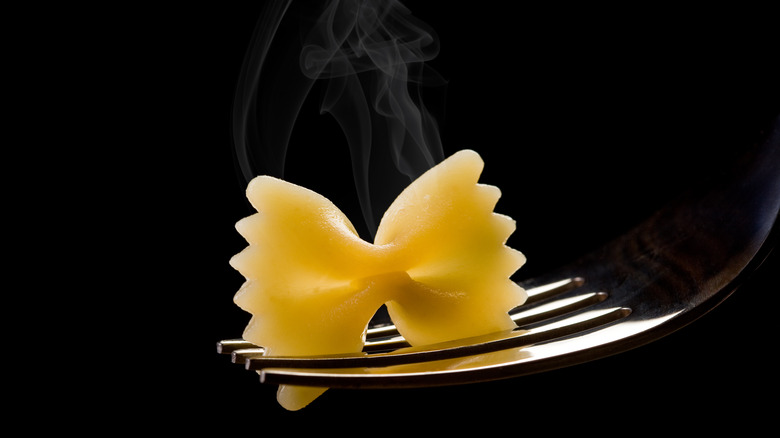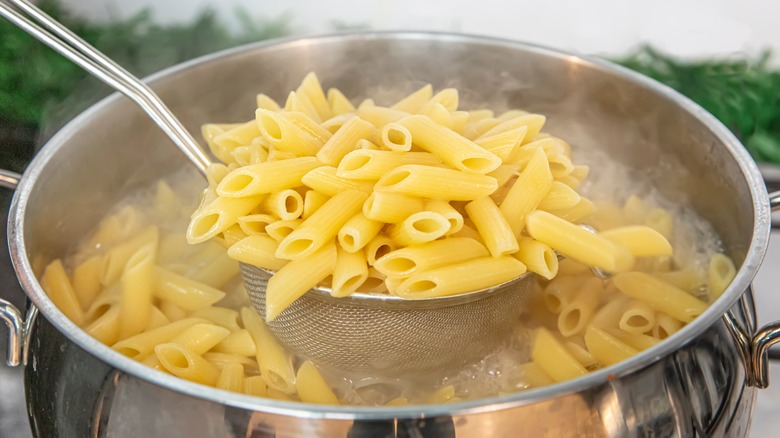Where The Pasta Term 'Al Dente' May Have Come From
You probably know that al dente is the fashionable way to cook pasta in Italy and for good reason. In addition to its toothsome texture, al dente pasta has greater nutritional value. According to Barilla, the world's largest producer of pasta, overcooked noodles cause a higher spike in your blood sugar. Cooking your pasta al dente doesn't just save you from a mushy meal, it actually improves its nutritional value.
While it isn't clear who devised the term al dente, its origins appear quite logical. According to Lexico, al dente literally translates to Italian as "to the tooth," a sensible explanation, since al dente pasta should be slightly firm and retain a bit of a chewy texture. Some of the earliest written pasta recipes — such as Ippolito Cavalcanti's recipe for vermicelli with tomato sauce in his early 19th-century cookbook, "Cucina Teorico Pratica" — urge readers to slightly undercook their noodles, although the term al dente was not yet used.
'Al dente' entered the English lexicon in 1898
While it's difficult to determine when the term al dente emerged in its native Italy, historians are fairly confident of when and how it entered the English lexicon. It first appeared in "Mrs. Roundell's Practical Cookery Book" by Julia Anne Elizabeth Tollemache, a British writer whose wealthy background would have afforded her the opportunity to travel to Italy. She specifically credits the Neapolitans with coining the term al dente.
It would take another two decades for the phrase to reach American shores. According to Salt Lake City's Cucina Toscana, it didn't start appearing on menus in the states until after WWI. The term reached new heights of popularity in the 1980s, promoted by the New York Times and other prominent publications. Today, it remains the gold standard around the world and is the ideal texture for your next bowl of penne pasta or spaghetti.

